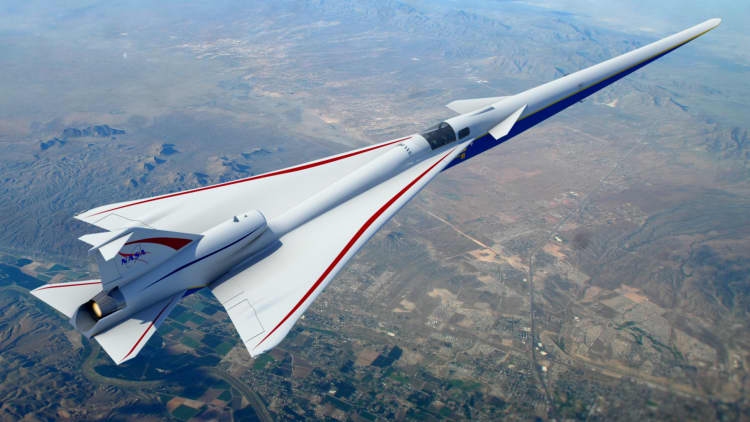
Lockheed Martin has won a nearly quarter-billion dollar NASA contract to develop a plane capable of supersonic speed without creating the deafening sonic boom that comes with breaking the sound barrier.
The cost-plus NASA contract, valued at $247.5 million, will allow the defense contractor's secretive Skunk Works division to continue development of Lockheed Martin's Quiet Supersonic Technology (or QueSST) aircraft. This is "NASA's first X-plane in a generation," a Lockheed Martin spokesperson told CNBC on Tuesday.
"We look forward to applying the extensive work completed under QueSST to the design, build and flight test of the X-plane, providing NASA with a demonstrator to make supersonic commercial travel possible for passengers around the globe," program manager Peter Iosifidis said in a statement.
Under the low-boom flight demonstration contract, Lockheed Martin will have a prototype for NASA to test fly by the end of 2021.
Lockheed Martin has agreed to develop an experimental plane that will cruise at 55,000 feet and reach speeds of about 940 mph. While such an aircraft would traditionally create a sonic boom, NASA expects the new aircraft to create a sound of less than half the noise level — or more akin to the sound of a closing car door.
Current regulations ban commercial supersonic aircraft from operating over land. New companies like Boom Supersonic are trying to make use of the technology for transoceanic routes, with backing from investors like Richard Branson and Japan Airlines.
But Lockheed Martin and NASA want to advance the technology through noise reduction to overturn regulations. The new experimental plane is designed to return supersonic passenger air travel to routes over land. The last such flight was by the Concorde in October 2003.
This new contract is a separate venture from Lockheed Martin's work with Aerion Corp. to develop a supersonic business jet, the AS2, which has its first flight planned for 2023.
The NASA X-plane will be built at Lockheed Martin in Palmdale, California.


